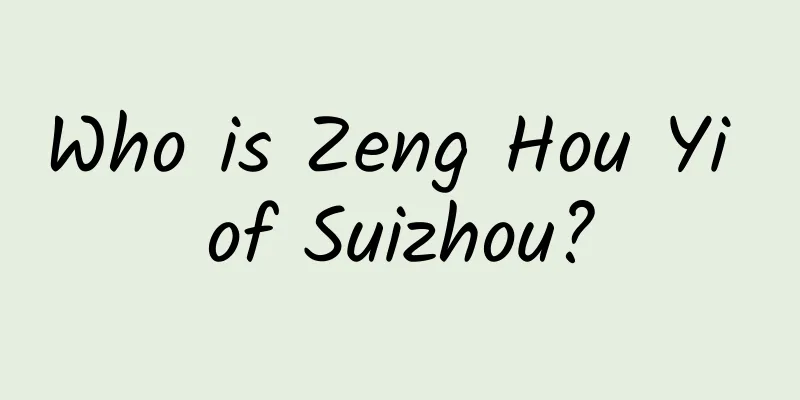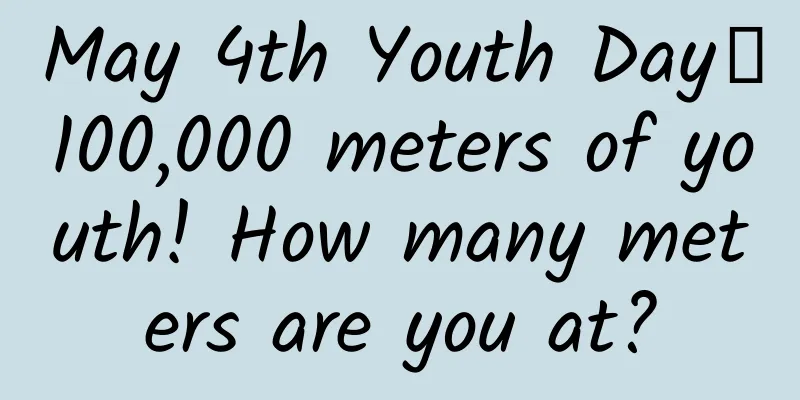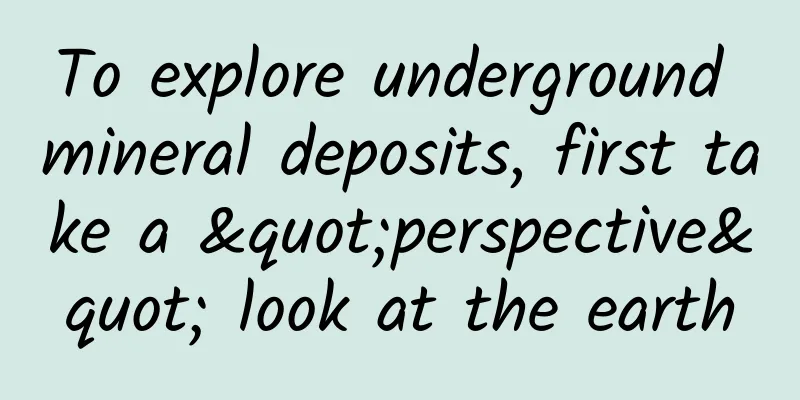Who is Zeng Hou Yi of Suizhou?

|
This is a Names not recorded in history books 1977 A unit in Suizhou, Hubei (then Sui County) expanded its factory A large tomb from the early Warring States period was accidentally resurrected A large number of bronze artifacts unearthed from tombs Repeatedly engraving a person's name "Zeng Hou Yi" (Inscription on Zenghou Yi Biao Bell, image source @ Suizhou Museum, map @ Yang Ning/Planetary Research Institute) ▼ Zeng Hou Yi? Who is Zeng Hou Yi? Scholars searched the historical records but found nothing. But this is the tomb of an "unknown person". 15,404 artifacts and bamboo slips were unearthed. There are 6,239 bronze artifacts alone. Its rich variety and excellent craftsmanship Breathtaking (The bronze zun is part of a bronze zun plate, unearthed from Tomb No. 1 of Leigudun in Suizhou, also known as the Tomb of Marquis Yi of Zeng. Image source: Suizhou Museum, map by Yang Ning/Planetary Research Institute) ▼ Especially the large set of chimes standing in the center of the ancient tomb. It shocked the world It consists of 65 bells and weighs a total of 4.4 tons. Discovered so far The largest, most comprehensive and best preserved chime (Please watch in horizontal mode, Zenghouyi chime bells, photographer @苏李欢, map @杨宁/Planetary Research Institute) ▼ Where do these treasures come from? How many secrets does this ancient tomb hide? From 1978 to the present More than 40 years of research The identity of "Zeng Hou Yi" finally becomes clearer We can finally tell his story systematically. Restore a musical feast Tracing a period of ups and downs 01 The King of Troubled Times Suizhou City, Hubei Province, where the Zenghouyi Tomb is located Located at the border of Hubei and Henan provinces (Suizhou topography and location diagram, map @Taishan/Planet Research Institute) ▼ Northeast of Tongbai Mountain Green mountains and hills (Tianwangzhai Scenic Area is located on Gucheng Mountain, the second highest peak of Tongbai Mountain. Photographer: Huang Jiang) ▼ Southwest of Dahongshan The Peaks Compete for Beauty (Please watch in horizontal mode to get a bird's eye view of the golden roof of Da Ci'en Temple on Dahong Mountain. Image source: @随州文旅) ▼ Two mountains facing each other Numerous streams (Three Pools Waterfall, located in Guangshui, Suizhou, picture source: @Suizhou Culture and Tourism) ▼ The streams converge into the Yun River which runs through the area. Flows south into the Yangtze River (The Jue River and its tributary, the Jué River, meet in Suizhou city; the Jué River is on the lower left of the picture, and the Jué River is on the lower right to the top. Photographer: @石耀臣) ▼ Alluvial deposits of rivers This forms a narrow plain running from northwest to southeast. To the south, you can follow the Yushui River and reach the heart of the Jianghan Plain. To the north, it can connect to the Central Plains via Xiangyang Known as the Sui-Zao Corridor (Show the location of the Sui-Zao Corridor, drawn by @Taishan/Planetary Research Institute) ▼ Advantages of mountains and rivers, convenient location Suizhou became The survival base of the Chinese ancestors Dozens of Neolithic sites All over Suizhou (Suizhou is the hometown of Emperor Yan Shennong; Suizhou is the birthplace of Emperor Yan Shennong in legend, photographer @石耀臣) ▼ In the Shang and Zhou dynasties This place has become an important bronze corridor Huge demand for bronze ware Driving the Central Plains Dynasty to expand outward Copper, tin, lead and other minerals from Hubei, Hunan and Jiangxi Go north along the Yangtze River and the Yushui River through the Sui-Zao Corridor People call him "Kim Do Seok Hang" (The term "Jindaoxixing" comes from the bronze inscriptions of the Zeng State in the early Spring and Autumn Period, meaning "the channel for transporting copper and tin", and the Suizao Corridor is one of them; the picture shows a partial route of "Jindaoxixing", drawn by @Taishan/Planetary Research Institute) ▼ To control this road And prevent barbarian invasion The Zhou emperor granted several vassal states with the surname Ji here The so-called "Hanyang Ji" (The Zhou royal family also had the surname Ji) The strongest among them That is, Suizhou is the center Zeng Guo (Although the name of "Zeng State" does not appear in historical records, its archaeological remains are extremely rich and it is called "the excavated vassal state"; the picture shows the distribution map of the remains of Zeng State during the Western Zhou Dynasty, drawn by @Taishan/Planetary Research Institute) ▼ Early Western Zhou Dynasty Zeng Guo loyally assisted the Zhou emperor He conquered rebellious princes and tribes many times Highly trusted by the royal family Because it is located east of the Han River Therefore, it is also known as the "Great Power of East Han". Zeng State advocated ritual and music Bringing the ritual and music civilization of the Central Plains to the South And the convenience of controlling the bronze corridor It also provided the possibility for the subsequent large-scale casting of bronze ware. In addition, the Zhou royal family's reward to Zeng State The Zenghou of all dynasties left only one place in Suizhou. Many exquisite musical instruments including 12 sets of chimes (The chime bells in Tomb No. 2 of Leigudun are later than those in Tomb Yi of Zenghou. They contain 36 chime bells, the second largest number unearthed so far. Image source: Suizhou Museum, map by Yang Ning/Planetary Research Institute) ▼ However Since the late Western Zhou Dynasty The Zhou Dynasty gradually declined and the princes rose up The Chu State, a vassal state of a different surname adjacent to the Zeng State It also rose rapidly during this period From 706 BC onwards, Chu State constantly harassed Zeng State Historians have repeatedly recorded in Zuo Zhuan that "The Sui army was defeated", "The Sui marquis was afraid", "The Sui people were afraid" (Whether Zeng State and Sui State recorded in historical books are the same country is one of the core issues in Zeng State archaeology; the picture below shows Zenghou and chime bells from the late Spring and Autumn Period, on which there are inscriptions about the history of Zeng State and "King Zhao fled to Sui", which supports the view that Zeng and Sui are one country with two names; picture source @Star Research Institute, map @Yang Ning/Star Research Institute) ▼ Under threat of force Zeng was forced to submit to Chu Zeng Hou Yi That is, a monarch during the period when Zeng State was affiliated with Chu (The sequence of known monarchs of the Zeng State throughout the dynasties is summarized from archaeological discoveries, drawn by @杨宁/星球研究院) ▼ One day more than 2,400 years ago Zeng Houyi received a gift from the King of Chu A nearly one-meter-high and 134.8kg Bronze bell This bell was first Hanging in the ancestral temple of Zeng State After Zeng Houyi died It also replaced a large set of chime bells buried with the dead. The one in the center Sleeping with Zeng Hou Yi These actions are politically charged. This set of chimes is the one that is famous in China today. Zenghouyi Chime Bells (Please watch in horizontal mode. The original Zenghouyi chime bells are located in the Hubei Provincial Museum. The Bi bell is the fifth from the right in the bottom row. Image source: @Planetary Research Institute, map by @Luo Zihan/Planetary Research Institute) ▼ So What is so magical about this set of chimes? Why did the ancients attach so much importance to it? Dispelling the fog of history Let’s find out 02 King of Chimes This is a An era in which rituals and music were in disarray and the princes were fighting against each other Also a An era of contention among hundreds of schools of thought and unprecedented cultural prosperity As the Zhou emperor gradually declined Zeng State had a considerable amount of bronze raw materials Zeng Houyi decided to use these raw materials Make a set of "national treasures" that symbolize royal power and order chimes (The chime bells are both musical instruments and important ritual vessels; the bell below is the Jinhou Su bell, which was made by Jinhou Su as a reward from the Zhou emperor for his military exploits. Image source: Shanxi Museum, map by Yang Ning/Planetary Research Institute) ▼ He summoned skilled craftsmen The first step is to determine the proportions of the various raw materials People in the Warring States period had already discovered Different ratios of copper, tin and lead This will result in different properties of the bronze ware. People summarize it as "Six Qi". As for the chimes Too little tin, the sound is not full and pleasant enough Too much tin will make the bell brittle and easy to break. Only reasonable copper-tin ratio To make a good bell (Six kinds of copper-tin ratios in Kaogongji, "Liu Qi" refers to the raw material ratios of six kinds of bronze ware, drawn by @Luo Zihan/Planetary Research Institute) ▼ The craftsmen carefully mix the ingredients according to the quantitative specifications. With 84% copper, 14% tin and less than 2% lead Smelting the most suitable copper liquid for bell casting Next is casting The craftsman used the most popular casting method at the time. First, the clay is fired into a mold Forming two "models" - one inside and one outside Then pour the copper liquid into the cavity between the two molds. After it solidifies, break the ceramic mold You can get bronze objects of a specific shape (Illustration by Yongzhong Fanzhu, drawing by Luo Zihan/Planetary Research Institute) ▼ There are three types of Zenghouyi chime bells Including 1 bi bell, 19 niao bells, and 45 yong bells The bell presented by the King of Chu It is named after the exquisite patterns all over its body. Large size and solemn shape (Zeng Hou Yi Bi Zhong; the character “Bi” is composed of “金” and “尃”, and “尃” means to display patterns. Image source: Suizhou Museum, map by Yang Ning/Planetary Research Institute) ▼ Button Bell Named after the button on the top Small size, clear and pleasant sound Yong Bell It is named after the hollow “yong” on the top. Different sizes, mellow and bright tone (Part of the Zenghouyi chime bells, including the Niu bell and Yong bell, image source: Suizhou Museum, map by Yang Ning/Planetary Research Institute) ▼ It is worth mentioning that These button bells and bells are oblate in shape. Like two tiles coming together It is a tile-shaped This is a magical shape It can accelerate the attenuation of the vibration of the bell body Shorten the duration of vocalization When multiple chimes sound in sequence There will be no interference between each other (Schematic diagram of the tile-shaped structure, drawn by @Luo Zihan/Planetary Research Institute) ▼ also The tile-shaped structure also gives the chimes Another magical thing “One bell, two tones” When striking the front and side of the same bell drum It produces two different pitches of sound. These two sounds are therefore called “Main drum sound” and “side drum sound” (The main drum tone position and the side drum tone position are shown in the figure. Different striking positions cause different deformations of the chimes, thus resulting in different pitches. Map by @罗梓涵/星球研究院) ▼ The existence of “one bell with two tones” This enables the chimes to produce more and wider sounds. There is an inscription of nearly 3,000 words on it. The system records the "one bell with two tones" and other Musicology theory at the time It can be called the "encyclopedia" of pre-Qin music (The inscription on the Zenghouyi chime bells, the picture is a copy, the picture comes from @Planet Research Institute) ▼ but The newly cast bell is still just a bell embryo. Its tone is not yet precise and stable The craftsmen then entered the next stage Begin fine tuning of the bell embryo In this process that embodies the wisdom of the ancients A five-stringed instrument called Jun Zhong appeared It is like a zither but not a zither, like a se but not a se It is a tool used to tune the sound. (Jun bell, unearthed in the east chamber of Zenghouyi's tomb; music refers to the sound heard by the human ear, and law refers to a set of standards for determining pitch, which are mostly achieved through mathematical calculations; image source @Planetary Research Institute, map by @Yang Ning/Planetary Research Institute) ▼ The craftsman played the expected pitch on the bell. While striking the bell embryo to make it sound And "use your ears to tune with the sound" Compare the pitch of these two notes by ear Then use a sharp stone to polish the inner wall of the bell embryo. As a body music instrument The smaller the bell body, the thicker the bell wall. The higher the vibration frequency The higher the pitch, therefore The craftsmen will first cast the bell embryo thicker. Then, by repeatedly grinding the inner wall Gradually lower the pitch Until the ideal effect is achieved (Sketch of the polishing of the chime bells, drawn by @Luo Zihan/Planetary Research Institute) ▼ In this way Zenghouyi owned 65 bells with different pitches But they are not yet "edited" It's not a unified set of chimes. This is when the fourth step is needed. List So-called compilation According to certain rules Arrange multiple chimes into a sequence Early chime bells were usually composed of 3, 8 or 9 pieces. The shape is relatively simple (Please watch in horizontal mode. The M111 chime bells from the Yejiashan Cemetery are the earliest known set of chime bells in my country. Image source: Suizhou Museum. Map by: Yang Ning/Planetary Research Institute) ▼ Zeng Houyi lived in the early Warring States period. Chime bells have reached the peak of their development He divided the 65 bells into three layers and eight groups. Each group has seven complete voices and can play music independently The principle is that the button bell is on top and the bell is on the bottom. The order of the scales in each group Hang them on the copper and wooden frame one by one Clock frame with cloud pattern around the column Like a dragon hovering (Bell frame, photographer @王俊菁, map @罗梓涵/Planet Research Institute) ▼ The ring uses the claw as the hook Like a tiger lying dormant (Tiger climbing ring, picture source @Planetary Research Institute, map @Luo Zihan/Planetary Research Institute) ▼ A huge, beautiful Chime bells represent the highest achievement of pre-Qin music It was born like this In the range It spans five octaves Only one octave less than the modern piano On the scale It breaks through the limitations of the pentatonic scale of Western Zhou Dynasty Yayue The addition of two tones, "bian zhi" and "bian gong", made it seven tones. In relative intervals It also maintains sufficient accuracy Make it sound very harmonious and pleasant (Please watch in horizontal mode, diagram of the chime range, photographer @苏李欢, map @杨宁/Planet Research Institute) ▼ Zeng Houyi arranged five musicians for this set of chime bells. Two people each hold a bell-ringing stick Hit the lower bell Three others each held two bell hammers. Strike the upper middle bell (Bell-striking rod and bell hammer, picture source: @Planetary Research Institute, map by @Yang Ning/Planetary Research Institute) ▼ at the same time Due to the requirements of etiquette norms When playing the chimes All five musicians must face the audience Strike the chimes with your back to the chimes To show respect to the host and the guests This requires long rehearsals To find the exact hitting point (A painted wooden box in the shape of a mandarin duck, and the picture of striking the bells painted on it; according to scholars, the picture records the position and striking method of the bell players, picture source @ Suizhou Museum, map @ Luo Zihan/Planet Research Institute) ▼ After rehearsal The chimes are finally on stage And an important guest Or perhaps it was at this time that he visited the Zeng State In the echoing sound of the chimes A palace feast carefully prepared by Zeng Houyi Pulling back the curtain 03 A feast Warring States Period The trend of extravagance and enjoyment among the princes prevailed They were no longer satisfied with the solemn and dignified Western Zhou Dynasty music. More varied music styles and richer instrument types Appear on the stage first It is the melody part of the whole performance. Zeng Houyi Beyond Chime Bells A group of equally large-scale chime stones were also arranged. (The Zenghouyi chime stone is the largest chime stone unearthed in my country so far. Image source: Suizhou Museum, map by Yang Ning/Planetary Research Institute) ▼ It contains 32 stone chimes made of limestone and marble. The surface of the chime is polished to be extremely smooth. The sound is more ethereal and crisp than the chimes When playing The musician holds the mallet in both hands and gently strikes the drum There are single click, double click, wheel click, scratch, shake Various playing methods Its sound is as thin as moonlight Reflected in the ocean of bells Composition of "Sound of Gold and Stone" (Schematic diagram of the structure of a musical chime, drawn by @Luo Zihan/Planetary Research Institute) ▼ In addition to traditional large percussion instruments such as chimes and chimes Zeng Houyi also added emerging small instruments to his band Including wind instruments such as sheng, panpipe, chi (chí) and the plucked string instrument瑟 This makes the performance of the entire band more expressive. They are all solo performances. Wind instruments are soft and graceful, while string instruments are clear and distant. This kind of arrangement of stringed instruments and bamboo instruments, and "playing harp and flute" It also gradually evolved into a common instrumental arrangement form in later generations. (The above four musical instruments unearthed from the Tomb of Marquis Yi of Zeng, picture source @Planetary Research Institute, map @Yang Ning/Planetary Research Institute) ▼ Because there are many melodic instruments It is inevitable that the speed and weight of the ensemble will vary. Therefore, special rhythmic instruments are needed to coordinate This is the drum There are three types of drums in this band. Jian drum, handle drum, flat drum in The Jian drum is the largest and closest to the banquet. It is the main drum of the whole band. It is made of a long wooden column that penetrates the drum cavity and is inserted into the base. The drum head is leather, the drum body is maple, and the drum base is bronze. (The picture below shows the shape of the Jian Drum; except for the base of the Jian Drum, it is a restoration based on the literature. The picture is from @Suizhou Museum, and the map is @Luo Zihan/Planetary Research Institute) ▼ The drum seat is exaggerated 48 dragons of different sizes entwined with each other Like a group of startled dragons, like a wildfire (Bronze drum base, image source @ Suizhou Museum, map @ Yang Ning/Planet Research Institute) ▼ that's all Chime bells, chime stones, sheng, pan flute Many musical instruments such as chi, se, jian drum, handle drum, flat drum, etc. And the performers formed a large band Welcome distinguished guests To show respect to the guests Zenghou Yi presents his best ritual vessels There are specifications that can rival the Zhou emperor Ding and Gui (Please watch in horizontal mode. The Nine Dings and Eight Gui in the Tomb of Zeng Hou Yi are replicas. Zeng Hou Yi was buried with the Nine Dings and Eight Gui after his death as a marquis, which was an act of usurpation according to Zhou Li. Image source: @Planetary Research Institute) ▼ There is a refrigerator known as "my country's earliest refrigerator" Bronze Jian Can (The copper jar has two layers, the inner one is for storing wine and the outer one is for storing ice. Image source: Suizhou Museum, drawn by Yang Ning/Planet Research Institute) ▼ The largest wine vessel ever unearthed Large jar (A large jar was unearthed from the northern chamber of Zenghou Yi's tomb. It is believed that it was used to store wine and reward soldiers. Image source: Suizhou Museum, map by Yang Ning/Planet Research Institute) ▼ There are cleverly designed twin-shaped Lianban Duihu (The two pots are forbidden to be used as wine containers. The pots are used to store wine, and the forbidden pots are used to hold wine. Image source: Suizhou Museum, map by Yang Ning/Planet Research Institute) ▼ There is also the peak of ancient Chinese bronze manufacturing technology. Bronze plate Its whole body is in the form of a hollow Added intricate embellishments These accessories are cast using the extremely rare lost wax method. Exquisite and well-proportioned (Bronze zun and pan, the zun is a wine vessel and the pan is a water vessel. The craftsmanship has not been completely replicated to this day. Image source: @Planetary Research Institute, map by @Yang Ning/Planetary Research Institute) ▼ On stage Metal and stone sound in harmony, string and bamboo play together At the banquet The guests and hosts were all happy and excited. For the princes of the Warring States Period Palace banquets were so frequent The scene is so extravagant They believe in "treating death as life" This pattern is often followed in tomb burial objects. That’s why This is what allowed us to recreate this feast. (Schematic diagram of the layout of Zenghou Yi's Tomb. The arrangement of the funerary objects in the middle chamber follows the layout of palace banquets. Only some of the objects are shown in the picture. Map by @罗梓涵/星球研究院) ▼ Drunk, scattered The rituals are broken, the music is ruined Zeng Houyi, in a daze, sent the guests away Return to your bedroom There are countless exquisite personal items on display here. Including gold (The cloud-patterned gold cup weighs 2,156 grams and is the heaviest pre-Qin gold artifact ever discovered. Image source: Suizhou Museum, map by Yang Ning/Planetary Research Institute) ▼ Jade (Sixteen-section jade pendant with dragon and phoenix pattern, made by split carving and connection molding technology, picture source @ Suizhou Museum, map @ Yang Ning/Planet Research Institute) ▼ Lacquered Wood (Please slide to view the painted 28-constellation suitcase and the "28-constellation map" painted on it; this map is the earliest record of all the names of the 28 constellations in my country so far, the picture is from @ Suizhou Museum, and the map is @ Yang Ning/Planetary Research Institute) ▼ Bronze (The bronze crane with deer horns is believed to be a sacred bird that guides the soul of the tomb owner to heaven. Image source: Suizhou Museum, map by Yang Ning/Planetary Research Institute) ▼ and a different band from the court Private Chamber Band (Ten-stringed harp, unearthed from the east chamber of Zenghou Yi's tomb, image source @Planetary Research Institute, map by @Yang Ning/Planetary Research Institute) ▼ But he may no longer have the heart to play The war in this world is getting more and more intense. And the country's uncertain future Let him be exhausted (Three halberds with inlaid gold inscriptions, unearthed from the northern chamber of Zenghou Yi's tomb. The original wood connecting the three halberds no longer exists, and they are replaced by metal materials. Photographer @柳叶氘, map @杨宁/星球研究院) ▼ In a trance He finally fell into a deep sleep One sleep Two thousand years 04 Echoes of a Thousand Years Two thousand years have passed The world is turning upside down The bedroom becomes a coffin Zeng State became Suizhou Treasures, history, and civilization rediscovered And the Handong land that once nurtured them In a new way Reconnect Excavation of the Tomb of Zenghouyi Directly promote the improvement of Suizhou's urban energy level In 2000, Suizhou City was established Became the youngest prefecture-level city in Hubei Province (Binhu Sports Stadium, Suizhou City, photo source: @Planet Research Institute) ▼ Suizhou Today It has become a "rising star" in northern Hubei Its social economy and urban appearance Moving forward with a thriving momentum This is the "Hometown of Chinese Mushrooms" It is the largest mushroom distribution center and processing and export base in Central China. Traditional Suizhou delicacies such as shiitake mushrooms, green onion, rice with a twist, and black garlic They are collectively known as the "Four Treasures of Suizhou" (Sketch of the four treasures of Suizhou, picture source: @Suizhou Culture and Tourism, map by @Yang Ning/Planet Research Institute) ▼ This is the "China Special Purpose Vehicle Capital" Production of special vehicles represented by transport vehicles and tank trucks Accounting for about 10% of the national market share It is also formed with Wuhan, Xiangyang, Shiyan and other places “Hubei Automobile Industry Corridor” Become a pillar industry belt in Hubei Province (Suizhou Chengli Special Vehicle Base, photographer @石耀臣) ▼ It is also a national historical and cultural city and a national forest city. The "Root-Seeking Festival" is held on the 26th day of the fourth lunar month every year. Attracting Chinese people from home and abroad to the hometown of Emperor Yan and Shennong Paying Homage to the First Ancestor of the Chinese Nation (The Root-Seeking Festival held in the hometown of Emperor Yan Shennong is very lively. Image source: @随州文旅) ▼ The "Millennium Ginkgo Valley" here There are 5.2 million ginkgo trees, including 308 thousand-year-old ginkgo trees. Every autumn Mountains, rivers, plants, fields, and farmhouses are all covered with gold. The colors of the harvest (Please watch in horizontal mode, Millennium Ginkgo Valley, picture source: @Suizhou Culture and Tourism) ▼ Zeng Houyi It has become a cultural imprint Deeply imprinted in the trajectory of Suizhou's development At the original site of the excavation of Zenghouyi's Tomb A beautiful museum stands tall Showing the long history of the land beneath your feet (Site of Zenghou Yi's Tomb, Photographer @石耀臣) ▼ The chimes are now found in the streets and alleys here. On the streets of Suizhou Various creative designs based on chimes can be seen everywhere Whether concrete, abstract, flat or three-dimensional Showing the charm of "Hometown of Chinese Chime Bells" (Please watch in horizontal mode, Suizhou Cultural Park, which contains many cultural symbols including chime bells, photographer @石耀臣) ▼ More and more people I knew Suizhou and came to Suizhou because of Zeng Houyi I like Suizhou and appreciate Suizhou because of its unique appearance. (Night view of Suizhou city, image source: @Planet Research Institute) ▼ The Zenghouyi chime bells that have gone through the years Finally, a new glow appeared August 1, 1978 In its hometown Suizhou Zenghouyi chime bells were rung for the first time in public The group played songs such as "The East is Red" and "Liuyang River" (Huang Xiangpeng, conductor of the first public performance of Zenghouyi chime bells; Tan Weisi, host of the excavation of Zenghouyi's tomb; picture source @CCTV.com "If National Treasures Could Talk", map @Luo Zihan/Planetary Research Institute) ▼ Afterwards Experts have reproduced the Zenghouyi chime bells The original was included in the first batch of cultural relics prohibited from being exhibited abroad. Rarely ring the bell Only reveal your true voice on special occasions The most recent In 1997, when Hong Kong was returned to China Recorded with the original Zenghouyi chime bells Symphony 1997: Heaven, Earth and Man Resounding over the Special Administrative Region (Performance of "Symphony 1997: Heaven, Earth, and Man", picture from @CCTV.com "National Treasure", map by @Luo Zihan/Planetary Research Institute) ▼ Voice of China Never End The next time the bells ring When will it be? This article was created by Written by: Jiang Shangfan Image: Daytime sleep Map: Mount Tai Design: Luo Zihan, Yang Ning Proofreading: Director, Lili, Changchun Expert review: Huang Jianxun, researcher at Suizhou Museum This article is provided by Publicity Department of Suizhou Municipal Committee of the Communist Party of China Planetary Research Institute Co-production 【References】 [1] Hubei Provincial Museum. Tomb of Marquis Yi of Zeng[M]. Beijing: Cultural Relics Publishing House, 1989 [2] Yi Desheng. The Source of Tin Materials and the “Golden Road Tin Trade” in the Shang Dynasty from the Perspective of Scientific and Technological Archaeology[J]. Social Sciences in China, 2013, (5) [3] Zhang Maorong. Rediscussion of the Western Zhou Zeng State Cemetery at Yejiashan in Suizhou[J]. Jianghan Archaeology, 2016, (3) [4] Fang Qin. Archaeological Observation on Zeng State History[J]. Jianghan Archaeology, 2014, (4) [5] Fang Qin. Research on the History and Culture of Zeng State: From “Left and Right Civil and Military Officials” to “Left and Right King of Chu”[M]. Shanghai: Shanghai Ancient Books Publishing House, 2018 [6] Hua Jueming, Jia Yunfu. On the design and production of pre-Qin chime bells[J]. Journal of the History of Natural Sciences, 1983, 2(1). [7] Lin Rui, Wang Yuzhu, Hua Jueming et al. A study on the structure of the chime bells in the Zenghouyi Tomb[J]. Jianghan Archaeology, 1981, (S1) [8] Li Chunyi. History of Pre-Qin Music (Revised Edition) [M]. Beijing: People's Music Publishing House, 2005 |
<<: Tuna will die if it doesn't swim? Let me see who is talking nonsense
>>: High sugar and high fat content? Understand these 5 things to eat mooncakes safely!
Recommend
Mastering these 10 tools will help you quickly become an operations and promotion expert!
In the Internet era, there are many tool -type st...
Simple but not simple DingDong smart speaker review
DingDong smart speaker is the first smart product...
4 fires in 5 hours, all of them were caused by this! Every family needs it for cooking
May 14th In Taiyuan, Shanxi Firefighters complete...
If Foxconn really runs away, do we have to worry about the upcoming wave of unemployment?
If one company is used to represent Made in China...
Activity review | What I learned from an offline activity that was not very smooth
In order for an activity to be successful, adequa...
In April, domestic mobile phone shipments reached 41.728 million units, with 5G mobile phones accounting for nearly 40%
Data from the China Academy of Information and Co...
What are electronic anklets? How do they work?
Meng Wanzhou finally returned to China after bein...
Product operation: a low-cost growth hacking experiment from 0 to 1!
How can a product use growth hacking to achieve g...
The best sound of domestic iPhone 6! Experience of Big Coke 3
Although the latest iPhone 6 and iPhone 6 Plus ar...
Jia Yueting and Xu Jiayin are fighting each other. Who will win in the end depends on who is the chess player behind the scenes.
Xu Jiayin: Jia Yueting is spending money reckless...
Counterpoint: Global electric vehicle battery market to grow 19% year-on-year in the first half of 2024
The global electric vehicle battery market grew 1...
How to master cross-border online shopping? There are still three obstacles
In the business world, the powerful ones are in a...
Are you worried about not being able to write about the advantages of your product in an interesting way? Use these two tricks, customers will be itchy as soon as they read it
This article is going to talk about copywriting ,...
Why is Apple Pay dominating the United States but marginalized in China?
Apple Pay has developed rapidly in the United Sta...
How to carry out a systematic revision? An in-depth analysis of JD APP 11.0!
In an external environment disturbed by uncertain...









